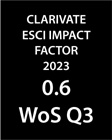Do all dogs go to county assembly?
The spatial distribution of the Hungarian Two-tailed Dog Party’s votes on the Fejér County list in the 2024 local elections
DOI:
https://doi.org/10.17649/TET.39.3.3591Keywords:
Hungarian Two-tailed Dog Party, Fejér county, local elections, county assemblyAbstract
The study aims to present the territorial aspect of the election results of the Hungarian Two-Tailed Dog Party (MKKP) on the county list in Fejér County. This county was chosen because the MKKP was only able to put up a list here. However, from an analytical point of view, Fejér County is particularly ideal, as it has multiple centers, is economically quite diverse, with some areas being among the most developed economic zones in the country, while other parts are significantly underdeveloped. For example, the catchment areas of Székesfehérvár or Dunaújváros are much more developed than the national average. In addition, the voters' political attitudes in the county also show a heterogeneous picture, as right-wing and left-wing constituencies are present, and areas with low political culture also shade the county's image. The western areas of the county can be considered more right-wing, while the eastern districts are more left-wing. However, Dunaújváros and its surroundings present a completely different picture, showing traditional left-wing attitudes, while in the Gárdony district and the Bicske and Martonvásár districts belonging to the Budapest agglomeration, traditional left-wing attitudes are replaced by more critical, new left-wing attitudes. Therefore, the theoretical framework primarily deals with the peculiarities of the county, the process of electing the county assembly, and the actual functions and powers of the assembly. In this context, a kind of general municipal emptiness can be observed; however, since the relative opposition's success in the 2019 municipal elections, some functions have returned to the county assemblies.
Additionally, the MKKP is brie[y introduced as a political organization, which is a relatively new organization on the Hungarian political palette, especially in rural local politics. Although the MKKP won several mandates in the 2019 municipal elections, it was only in Budapest. This was the first time they were measured in municipal elections outside Budapest and county assembly elections. As a new entrant, they closed with relatively good results, placing third behind Fidesz and the Mi Hazánk Movement, ahead of two parliamentary parties, the Democratic Coalition and the Momentum Movement, thus being the most voted non-right-wing party in the county.
The empirical part complements this with the territorial aspect of the 2024 municipal election results. Based on preliminary assumptions and other research, the MKKP is generally overrepresented in more urban and economically stronger areas. However, county list elections do not include county-level cities, thus providing more information about MKKP voters in more rural areas. According to the results, the MKKP performed better in economically stronger areas and those more in[uenced by Budapest, but performed worse in areas with lower political culture and strongly right-wing or traditionally left-wing areas. Thus, the MKKP has a rather unique voter base in the county.
Downloads
Published
How to Cite
Issue
Section
License
Copyright (c) 2025 Szegedi Péter, Tislér Ádám

This work is licensed under a Creative Commons Attribution 4.0 International License.
Authors wishing to publish in the journal accept the terms and conditions detailed in the LICENSING TERMS.






